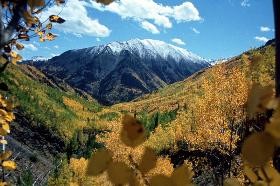Some prefer a pristine, unimpeded view of a waterscape. Others prefer a more natural vista, with intervening flora merging, intermingling with and enhancing the liquid expanse; this latter ensemble would be heartened through the spontaneous birth and growth of trees and shrubs composing this augmentation. However, they risk assault by critical comments upon why they would allow this disarray to occur.
One might respond that they prefer the variety and the severing of the monotony of an unobstructed view. Possibly, though, it can be more than this.
Perhaps, instead, it might be one manifestation of a visceral revulsion toward entropy. Employing myself as an example, and reflecting now, it appears I may always have maintained such an implicit mental framework: for I have long favored and gravitated toward the maintenance of diverse and distinct cultures. And an unobstructed waterscape might be styled as bland, and thus might be a reinforcing factor; for an inclination opposed to a too banal and undifferentiated vista of existence might be distressed when confronted with such a scene.
Such a critical aversion to an unobstructed and unbridled view of a waterscape can be viewed as simply the most immediate manifestation of such a perspective. For limitless, unconfined water is the very definition of entropy. Throughout the Scriptures, the sea constituted the very definition of chaos, and the clearest, most proximate example thereof.
Such a characterization is apt regardless of whether the surface might be violent or calm. For, if the former, though dramatic, yet is the exemplification of disorder, while, if the latter, wholly lacking in any discrete structure. Thus, only the introduction of terrestrial elements into the setting is capable of providing the variety necessary to counteract this inherent entropy.
WAYNE A. SMITH
Forester Twp, Michigan USA
03 Apr 2017
